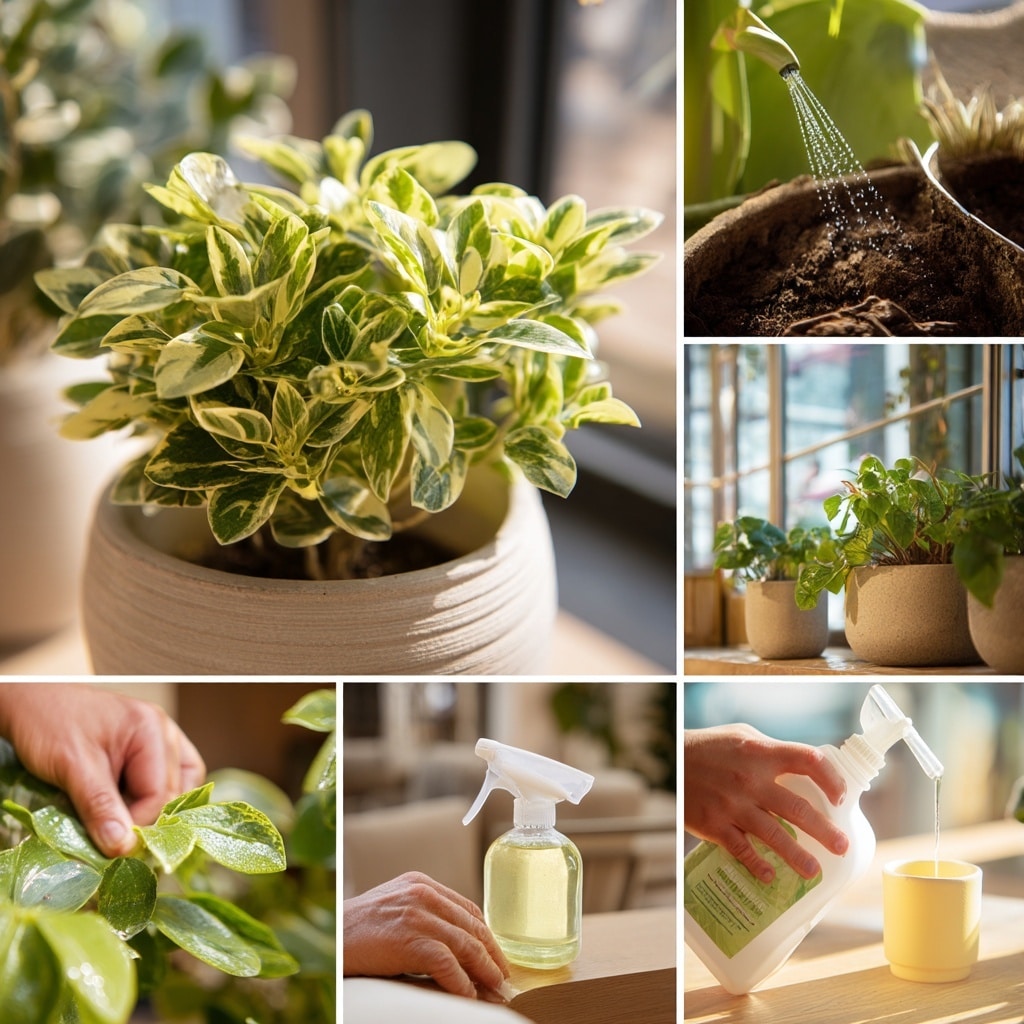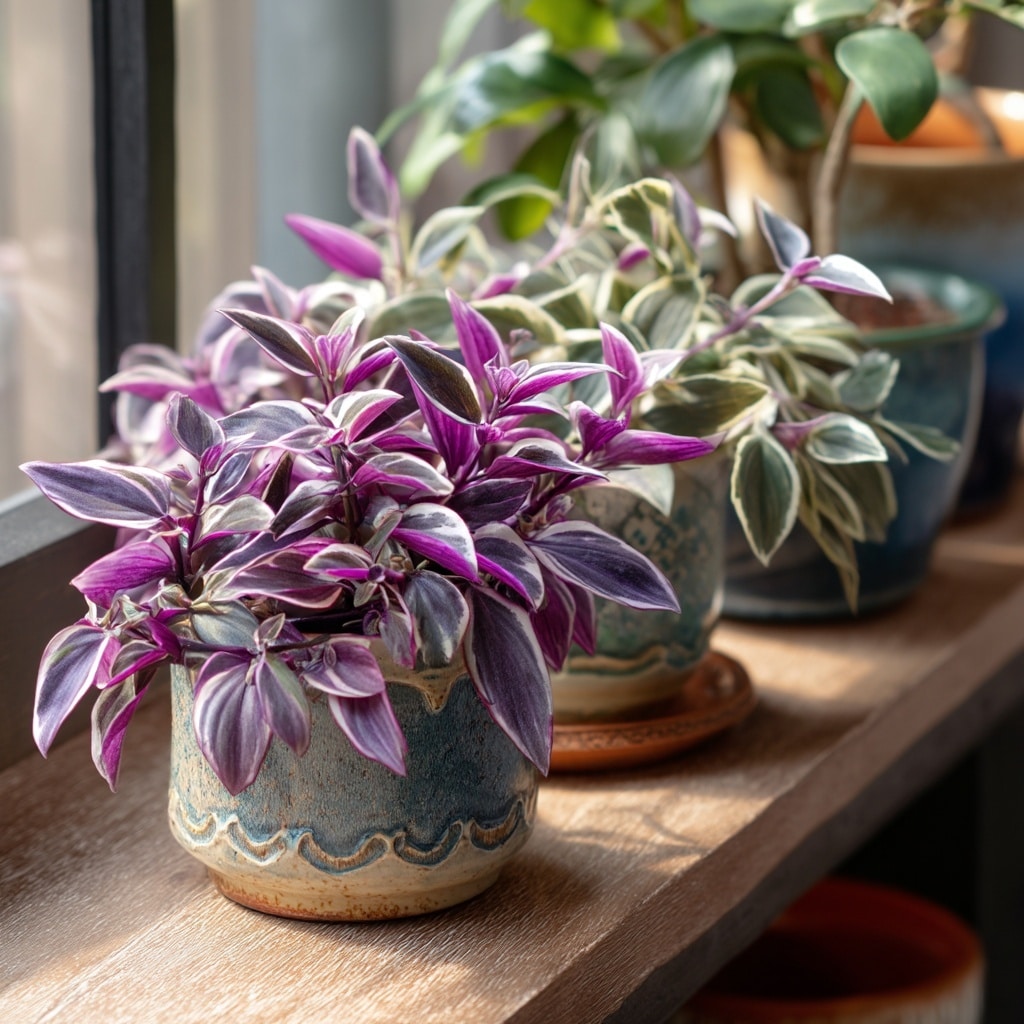How to plant Tradescantia indoors and outdoors is a question many home gardeners eventually ask as they admire the vivid purples and trailing vines of this charming houseplant. Whether you’re filling a sunny window ledge or brightening up a shaded corner of your backyard, Tradescantia offers color, character, and incredibly simple care. With its variegated foliage and occasional delicate blooms, this low-maintenance beauty is just as happy in a hanging pot as it is spreading across a garden bed.
Known by several names like inch plant, spiderwort, or oyster plant, Tradescantia thrives with minimal effort and is perfect for gardeners of all skill levels. In this guide, you’ll learn everything from where to plant it, how to keep it healthy, and how to multiply your collection effortlessly.
Table of Contents
Tradescantia Overview
Tradescantia is a vibrant and fast-growing tropical plant known for its colorful foliage and versatility in both indoor and outdoor settings. With over 70 recognized species, this plant family offers an impressive range of colors, leaf shapes, and growth habits—from upright to trailing varieties.
- Botanical Name: Tradescantia
- Common Names: Spiderwort, inch plant, oyster plant
- Plant Type: Tender perennial; grown as a houseplant or annual in colder climates
- Light Requirements: Bright, indirect light indoors; partial to full sun outdoors depending on variety
- Mature Size: 6–12 inches tall; 1–3 feet wide or trailing
- Foliage Colors: Green, purple, silver, variegated pinks and creams
- Flower Colors: Pink, white, or purple (usually small and short-lived)
- Growth Habit: Trailing, spreading, or upright depending on species
- Special Features: Low-maintenance, great for hanging planters, fast grower
- Propagation: Stem cuttings, division, layering
- Uses: Houseplant, groundcover, hanging baskets, companion planting
Whether you’re looking to plant Tradescantia for its decorative foliage or quick propagation potential, it’s a rewarding addition to your plant collection.
Where to Plant Tradescantia
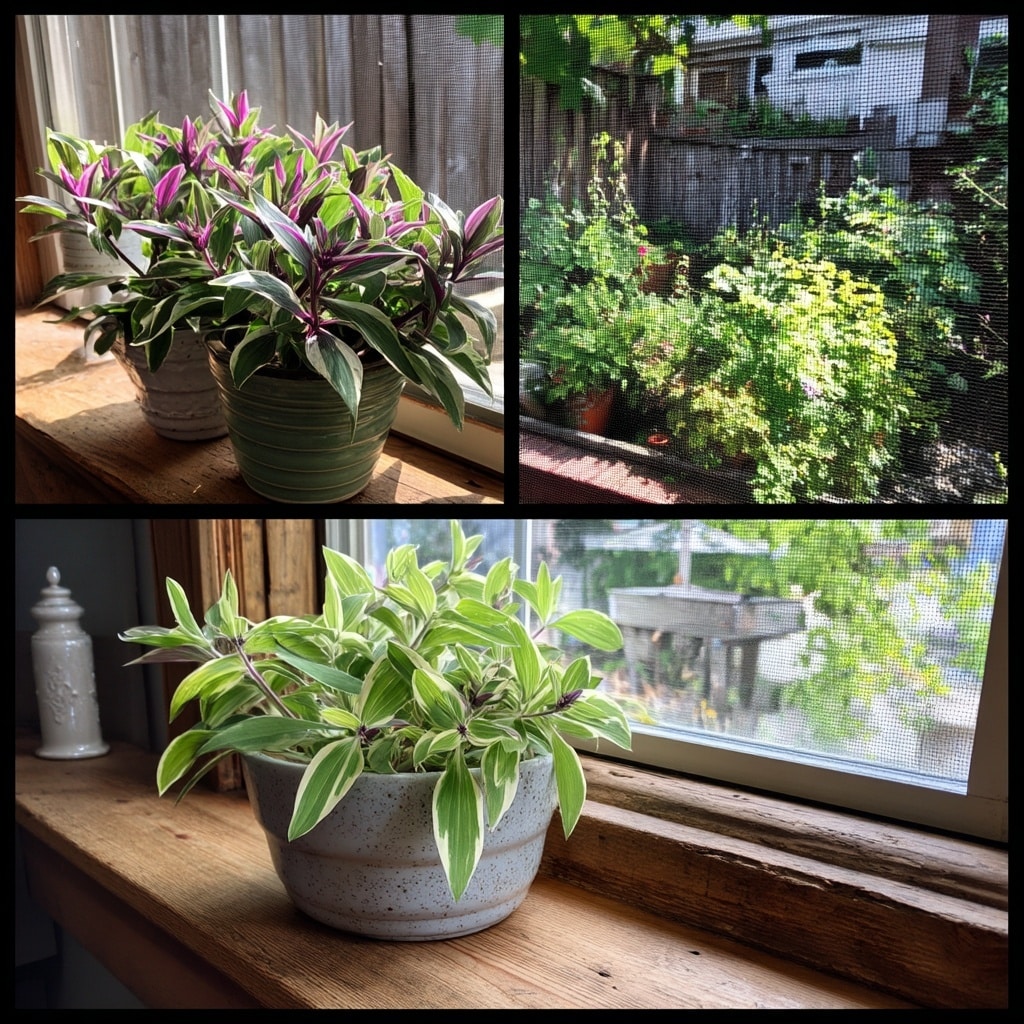
When deciding where to plant Tradescantia, light exposure and climate are the key factors. This adaptable plant can thrive both indoors and outdoors, but choosing the right spot helps maintain its vibrant color and dense growth.
🌞 Indoors
Place your Tradescantia near a window that receives bright, indirect sunlight. East- or west-facing windows are ideal. While it can survive in lower light, the plant may lose its vivid color and become leggy. Rotate the pot regularly for even growth and consider moving it outside during warm months to give it a boost.
🌿 Outdoors
Before planting Tradescantia in your garden, identify the variety. Some species prefer partial shade, while others develop the richest colors in full sun. In hot climates, filtered sunlight is best to prevent leaf scorch. Use it as a groundcover, in raised beds, or let it trail over the edge of containers and retaining walls.
Wherever you plant it, Tradescantia prefers protection from heavy wind and frost. In cooler zones, bring container plants indoors before the first freeze.
Tradescantia Care Tips
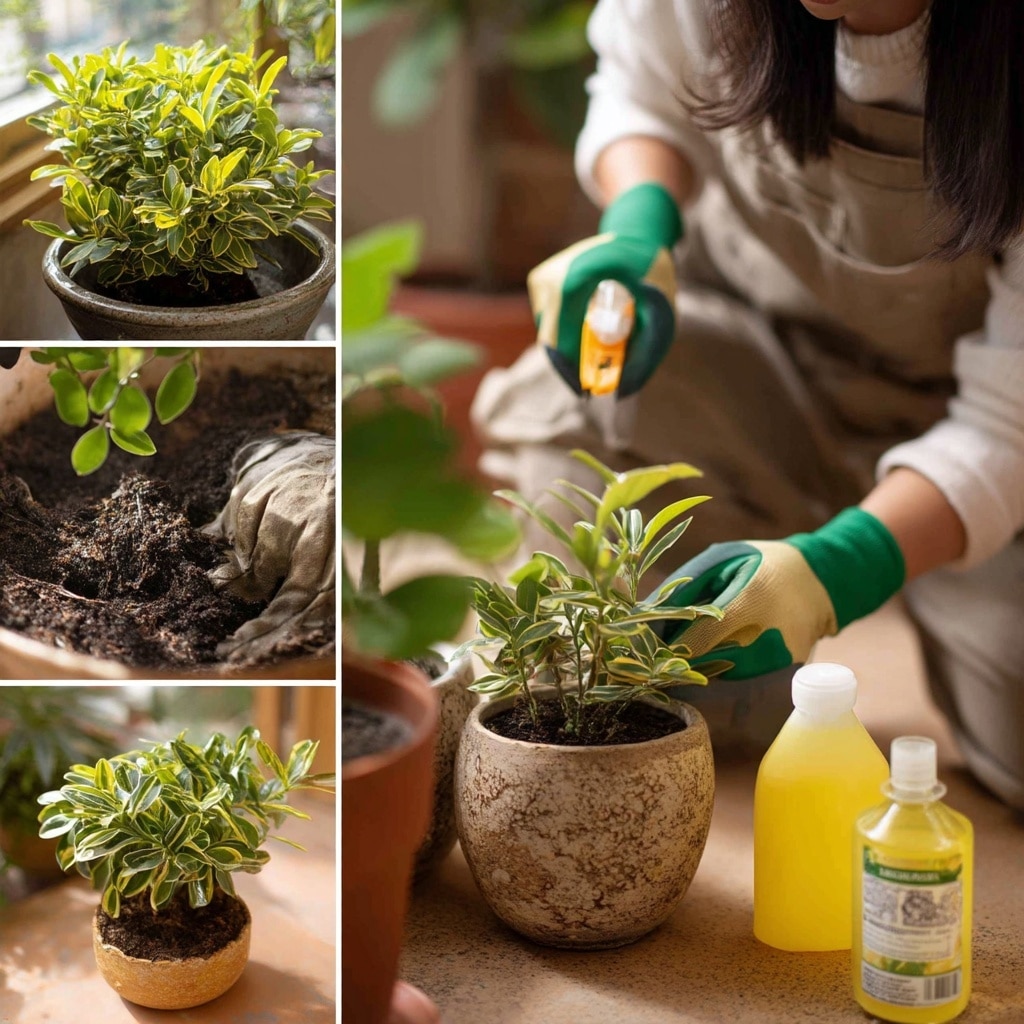
☀️ Light
When you plant Tradescantia indoors, bright, indirect light helps it thrive. South- or west-facing windows work well, especially for the deeper purple or variegated varieties that need more light to keep their color. Outdoors, the plant does well in partial shade to full sun. In extremely hot climates, protect it from harsh afternoon rays to avoid leaf burn. Insufficient light often leads to leggy stems and faded foliage.
🌱 Soil and Water
Use a well-draining potting mix if planting in containers. Outdoors, Tradescantia prefers moist, slightly acidic soil with good organic matter. Whether indoors or out, avoid soggy soil—its fleshy stems are prone to rot.
Water consistently to keep the soil lightly moist but not soaked. Let the top inch of soil dry between waterings. In dry climates or during hot spells, increase watering frequency, especially for potted plants.
🌡️ Temperature and Humidity
Tradescantia grows best in temperatures between 60–80°F (15–27°C). Indoors, it’s comfortable in typical household conditions. Outdoors, it’s sensitive to frost—bring it in before temperatures dip below 50°F. These plants appreciate moderate humidity, but can also tolerate drier air with occasional misting.
🌼 Fertilizer
While Tradescantia doesn’t need heavy feeding, applying a diluted liquid fertilizer once a month during the spring and summer growing season encourages fuller, more colorful growth. Use a balanced fertilizer at half strength. Avoid overfeeding—it can cause leggy stems and loss of variegation.
✂️ Pruning
To keep your Tradescantia compact and bushy, pinch back growing tips regularly. This stimulates branching and prevents the plant from becoming too leggy. Remove any yellow or withered leaves to maintain appearance and health. You can also prune overgrown stems and use them for propagation.
Potting and Repotting Tradescantia
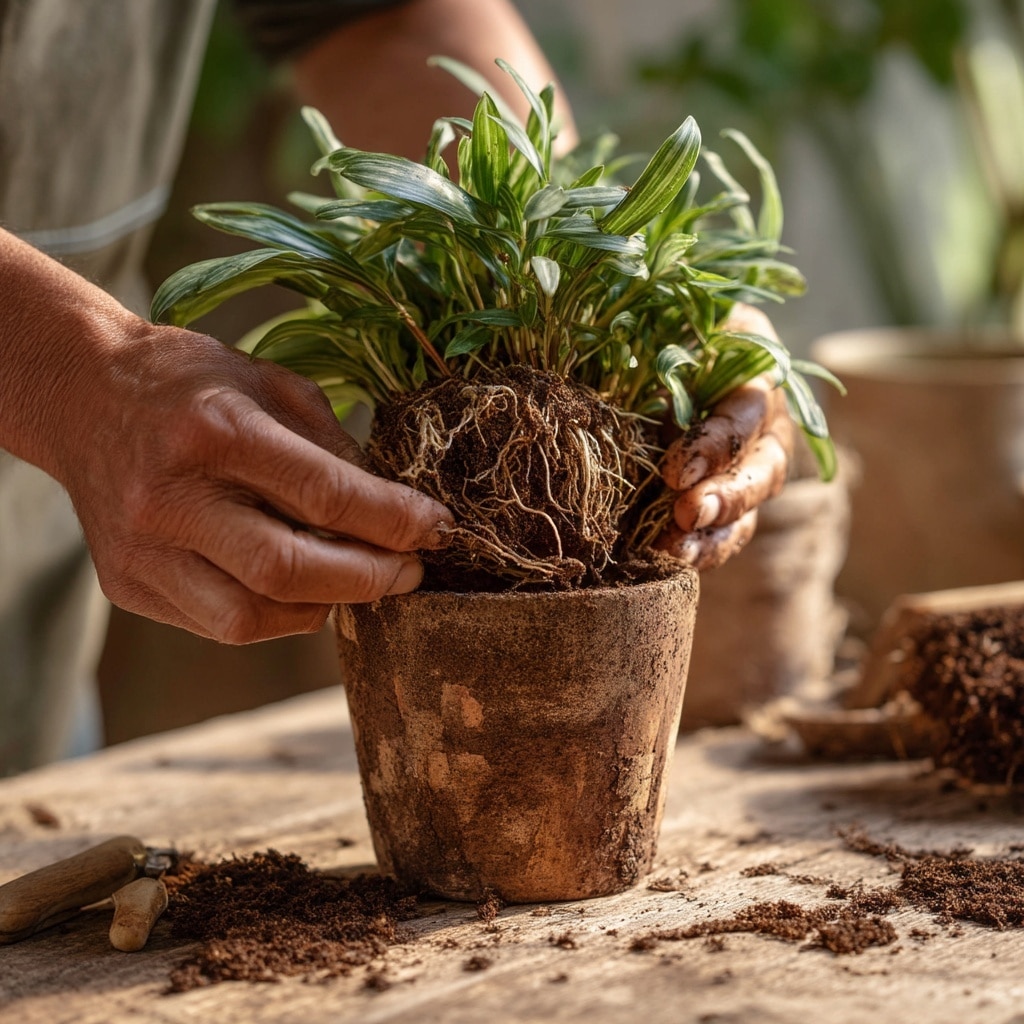
Whether you’re growing it as a hanging plant or letting it spill over a windowsill, Tradescantia thrives in containers — as long as they have proper drainage. Always plant Tradescantia in pots with drainage holes to prevent root rot, using a lightweight, well-draining potting mix.
When to Repot
Tradescantia doesn’t need frequent repotting. Watch for signs like roots poking out of the drainage holes or slowed growth. The best time to repot is in spring, when the plant begins its active growing season. Choose a pot that’s only slightly larger than the current one—too much extra space can lead to overwatering issues.
Repotting Tips
- Gently remove the plant from its old container
- Shake off excess soil and inspect the roots
- Trim any rotting or overly long roots
- Replant in fresh potting mix and water thoroughly
Repotting not only gives the plant more space to grow, but also refreshes the soil, ensuring healthy nutrient availability.
Pests and Problems
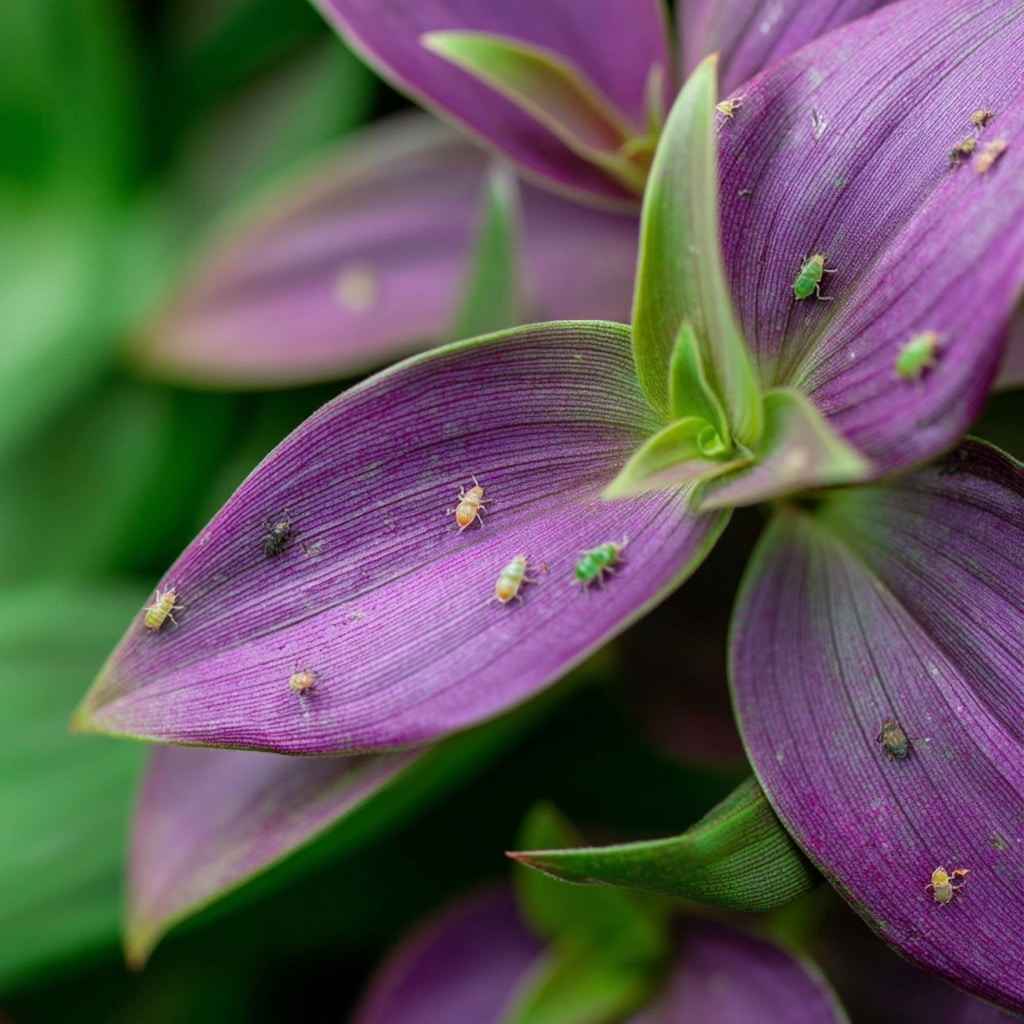
Tradescantia is generally a low-maintenance plant, but it isn’t immune to a few common issues. With regular care and observation, most problems can be prevented or resolved quickly.
Common Pests
- Aphids – These tiny green or black insects often gather near new growth. A strong spray of water or insecticidal soap usually removes them.
- Spider mites – Watch for fine webbing or speckled leaves. Increase humidity and wipe leaves with a damp cloth to deter them.
- Mealybugs – These appear as white, cotton-like clusters. Remove manually or treat with neem oil.
Regularly inspect the undersides of leaves and stems where pests tend to hide. Indoor plants are more prone to infestations due to stable, warm conditions.
Diseases and Other Issues
- Root rot – Caused by overwatering or poorly draining soil. Make sure your container has adequate drainage and water only when the top inch of soil feels dry.
- Leggy growth – Usually a result of low light. Move the plant to a brighter location and pinch back stems to encourage bushiness.
- Fading color – Occurs when the plant isn’t getting enough light or nutrients. Adjust lighting and fertilize during the growing season.
Healthy Tradescantia plants bounce back quickly from most problems. Keeping a consistent care routine is the best defense.
How to Propagate Tradescantia
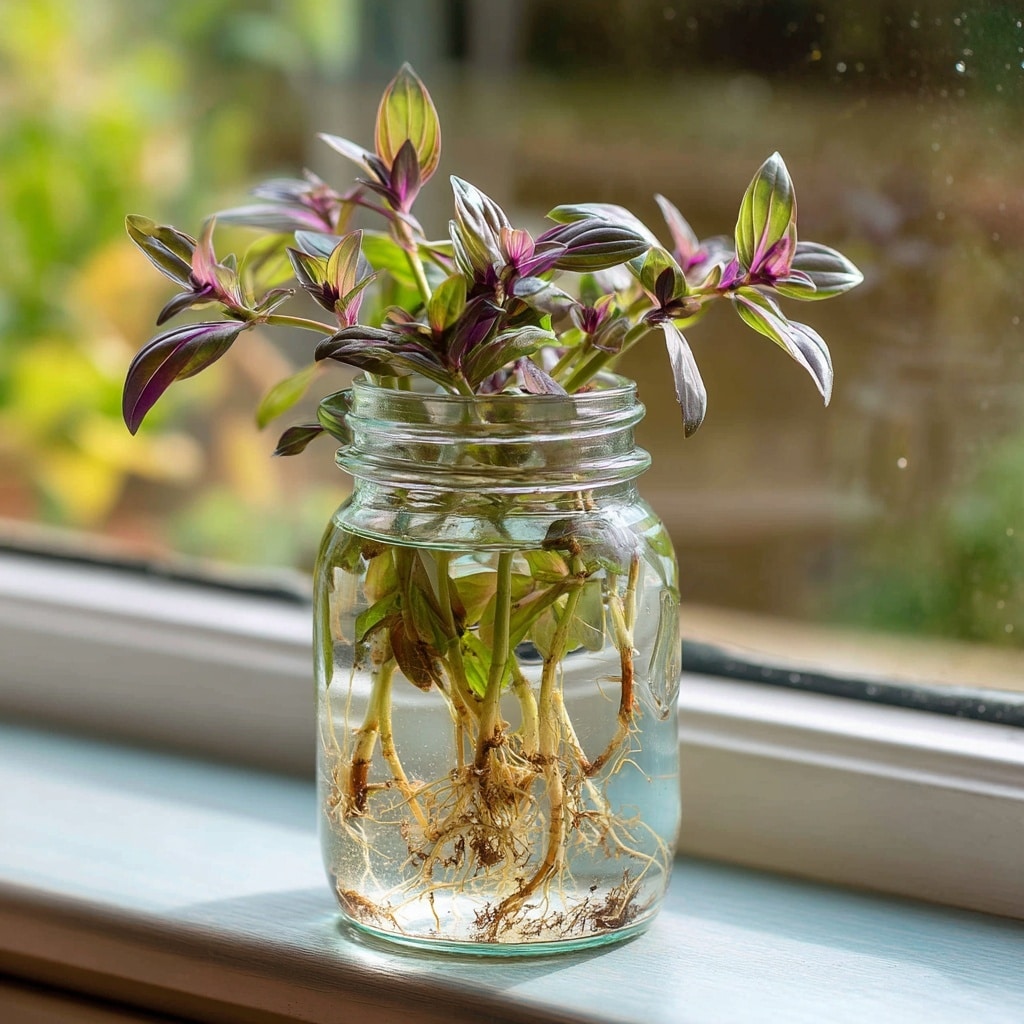
One of the best things about growing Tradescantia is how easy it is to propagate the plant and share it. Whether you’re expanding your collection or giving cuttings to friends, propagation is simple and fast.
🌱 Stem Cuttings (Most Common Method)
- Choose a healthy stem about 4–6 inches long with several leaves.
- Cut just below a node (where a leaf joins the stem) using clean scissors or pruners.
- Remove lower leaves, leaving a few at the top.
- Place the cutting in:
- Water – Use a clear glass for monitoring root growth. Change water every few days.
- Moist soil – Stick the cutting directly into fresh potting mix and keep it evenly moist.
Roots usually develop within 1–2 weeks. Once roots are 1–2 inches long, water-grown cuttings can be transplanted into soil.
✂️ Division
Mature Tradescantia plants can also be divided at the root. Gently separate the root ball and replant sections in new containers or garden spots. This method works best during spring or early summer when the plant is actively growing.
🌿 Layering
Some trailing varieties naturally root where stems touch the soil. You can pin a section of stem to soil with a paperclip or garden staple until it forms roots, then snip and pot it separately.
Types of Tradescantia to Grow
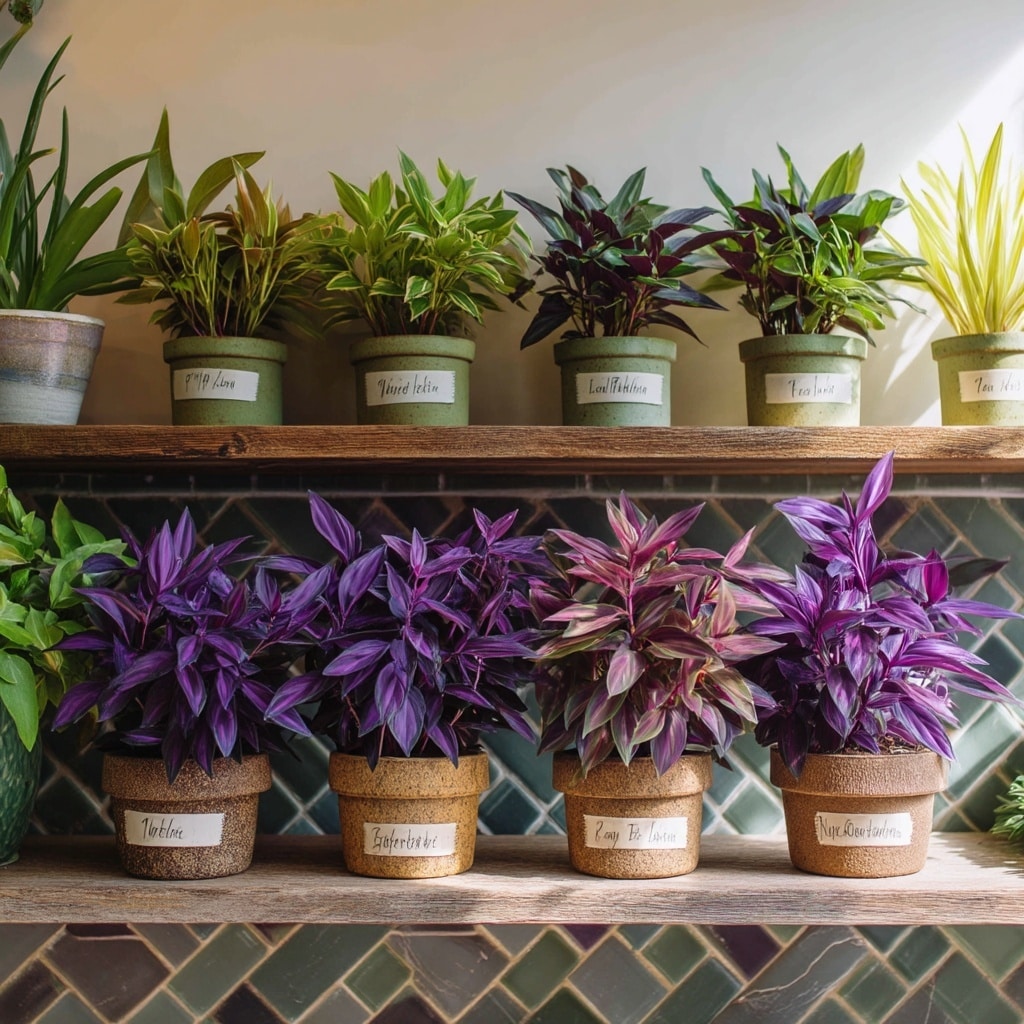
When you plant Tradescantia, you’ll quickly find there are dozens of stunning varieties to choose from, each offering unique colors, textures, and growth habits. Here are some of the most popular and eye-catching types for your indoor or outdoor garden:
🌿 Tradescantia zebrina (Silver Inch Plant)
- Recognized for its silvery green and purple striped leaves
- Fast-growing and ideal for hanging baskets
- Undersides of the leaves are deep purple
💜 Tradescantia pallida ‘Purpurea’ (Purple Heart)
- Known for intensely purple foliage
- Best grown outdoors in full sun to deepen its color
- Produces small pink blooms in warm weather
🛶 Tradescantia spathacea (Boat Lily / Oyster Plant)
- Sword-shaped green leaves with purple undersides
- Small white flowers nestle in boat-shaped bracts
- Often used as a groundcover in warm climates
🌈 Tradescantia spathacea ‘Tricolor’
- A variegated form of Boat Lily with pink, white, and green leaves
- More delicate than the solid green variety
- Great trailing option for containers
🌼 Tradescantia fluminensis (Striped Inch Plant)
- Fast-growing with creamy-yellow striped leaves
- Prefers bright, indirect light to maintain its variegation
- Can become invasive outdoors in some regions
❄️ Tradescantia sillamontana (White Velvet)
- Fuzzy, medium-green leaves covered in white hairs
- Compact and drought-tolerant
- Bright pink flowers appear in summer
These varieties let you mix and match textures and colors, whether you want a lush shelf of trailing vines or a statement piece in a garden bed.
Companion Plants for Tradescantia
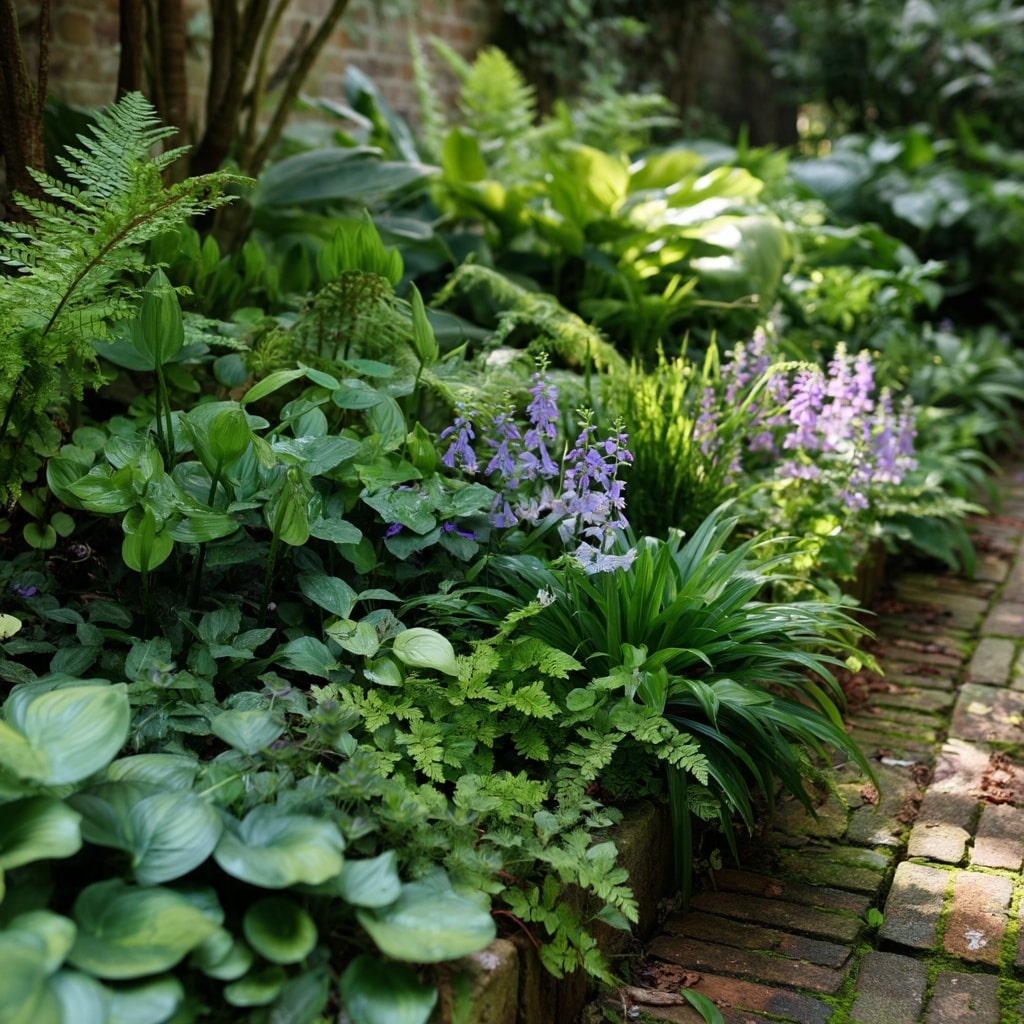
When you plant Tradescantia in outdoor beds or containers, pairing it with the right companion plants can enhance its appearance and support a healthy growing environment. Ideal companions should have similar light, water, and soil needs, and offer contrast in texture or color.
🌿 Giant Wood Fern (Dryopteris spp.)
- A bold, leafy fern that thrives in partial to full shade
- Its large fronds provide a soft, textural contrast to the fine stems of Tradescantia
- Both enjoy moist, well-draining soil and moderate humidity
🌸 Foamflower (Tiarella spp.)
- A low-growing perennial with delicate white flowers
- Offers early-season blooms that pair beautifully with Tradescantia’s foliage
- Works well in woodland-style gardens with dappled sunlight
💛 Corydalis (Corydalis lutea or flexuosa)
- Produces vibrant yellow or blue tubular flowers
- Loves the same part-shade, moist soil conditions
- Adds seasonal color without overwhelming Tradescantia’s trailing habit
These combinations are especially effective in shady gardens, woodland borders, or layered container arrangements. Grouping plants with complementary textures and similar care needs ensures a harmonious and thriving garden space.
Garden Plans Featuring Tradescantia

If you’re planning to plant Tradescantia outdoors, incorporating it into a thoughtful garden layout can enhance both its beauty and functionality. This plant’s spreading habit and colorful foliage make it ideal for shady borders, woodland gardens, or mixed containers.
🍃 Woodland Garden Plan
A classic use of Tradescantia is in a woodland-themed garden, where filtered light and rich soil support a lush, layered look. Here’s a simple layout to inspire you:
🌿 Suggested Layout:
- Back row: Giant Wood Fern for height and structure
- Middle layer: Foamflower or Heuchera for seasonal blooms and leaf texture
- Front edge: Tradescantia varieties like zebrina or sillamontana to spill over rocks or edging
This plan provides year-round interest with minimal maintenance. Tradescantia’s foliage adds depth and color even when flowers are sparse, and its trailing habit softens the hard edges of borders or raised beds.
🪴 Container Combo Ideas
Tradescantia also performs beautifully in mixed containers:
- Combine with Coleus or Begonia for contrast
- Use a tall, upright focal plant like Dracaena in the center
- Let Tradescantia trail over the edges for a cascading effect
Whether you’re working with a small patio or a shaded backyard corner, Tradescantia fits effortlessly into a wide variety of planting schemes.
Frequently Asked Questions (FAQ)

🧩 Is Tradescantia invasive?
In certain climates, yes. Some Tradescantia species — particularly Tradescantia fluminensis — are considered invasive in warm, humid regions like parts of Florida, Southern California, South Africa, and the Galápagos Islands. Outdoors, always monitor spread and avoid planting near native ecosystems where it can escape cultivation.
🌎 Where is Tradescantia originally from?
Tradescantia is native to Central and South America, especially Mexico. The genus is named after John Tradescant, a 17th-century English botanist who brought the plant to Europe. Since then, it has become popular around the world for both ornamental and practical use.
💊 Did Tradescantia have medicinal uses?
Yes. Native American tribes, including the Cherokee, historically used Virginia spiderwort (Tradescantia virginiana) to treat bug bites, rashes, and even some cancers. While not widely used medicinally today, these traditional practices highlight the plant’s historical significance.
🌿 Can I grow Tradescantia outdoors year-round?
Only in USDA Zones 9–11, where winters remain mild. In colder areas, treat it as an annual or grow it in containers you can bring indoors before frost. Tradescantia is frost-sensitive and won’t survive freezing temperatures without protection.
Conclusion
Knowing how to plant Tradescantia indoors and outdoors gives you a beautiful and low-maintenance addition to your home or garden. With vibrant foliage, easy care, and fast propagation, it’s a favorite for beginners and seasoned gardeners alike. Just provide the right light, moisture, and a bit of pruning, and your Tradescantia will thrive year-round. Whether trailing from a windowsill or spreading across a shaded garden bed, this versatile plant adds life and color wherever it’s planted.

